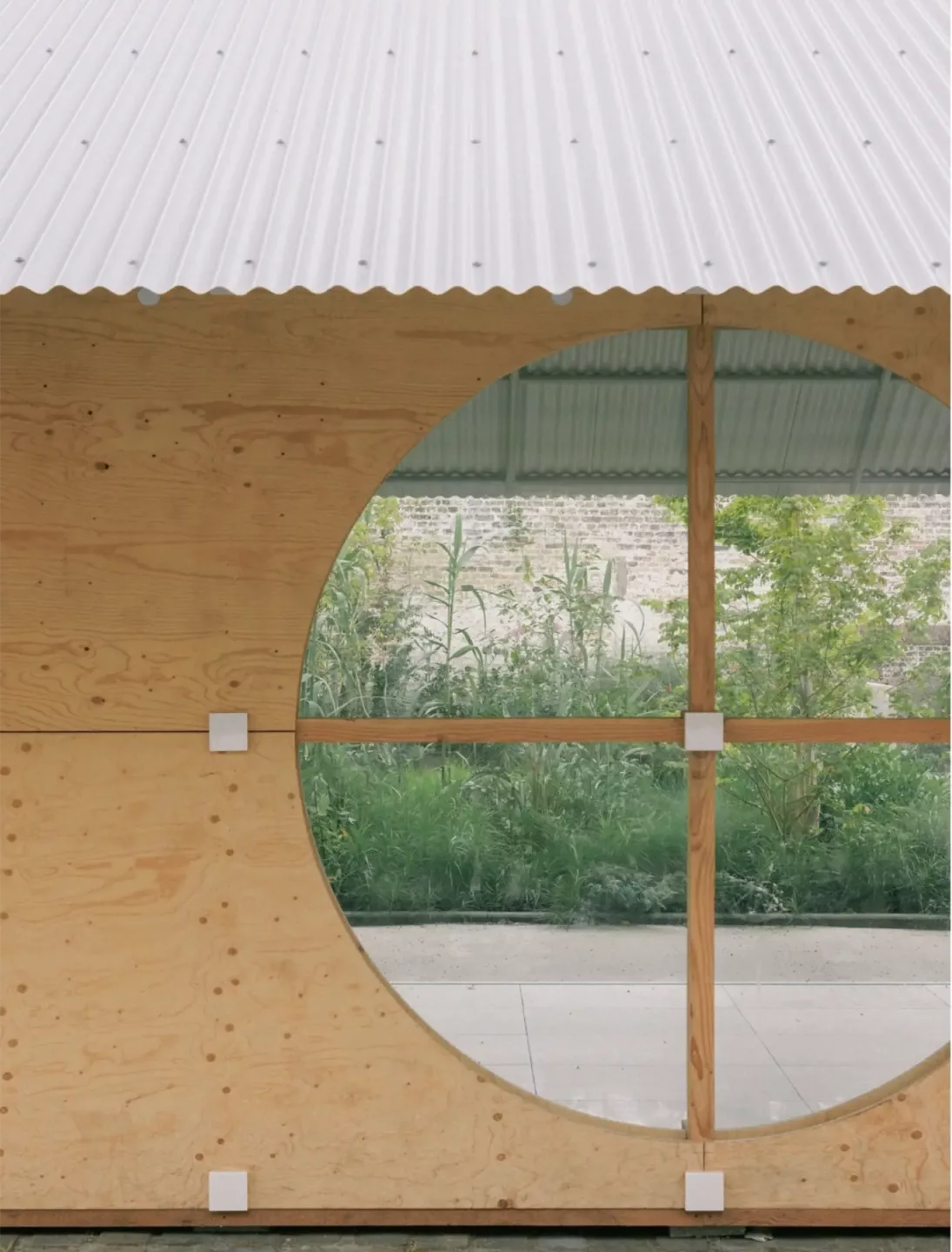
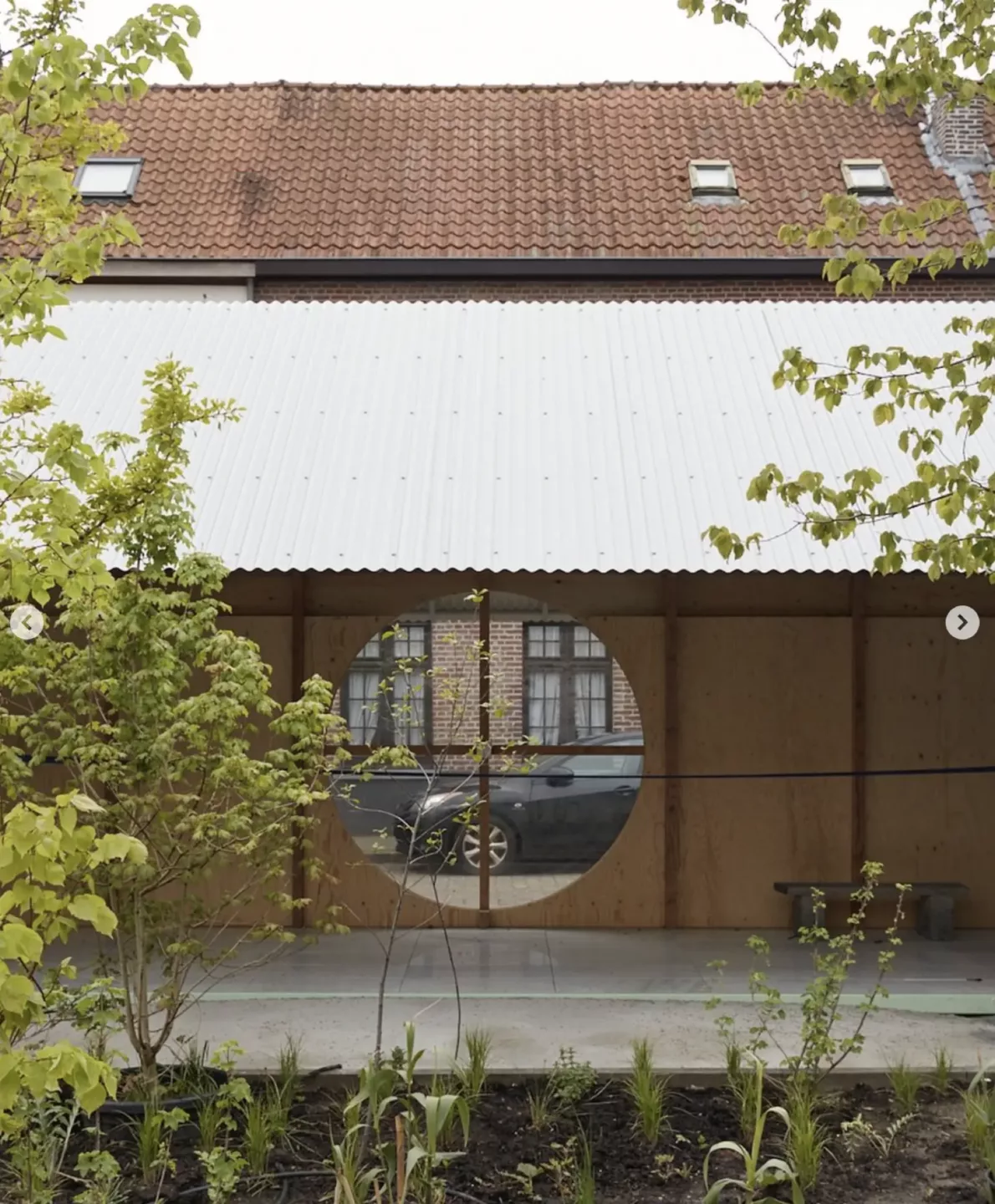
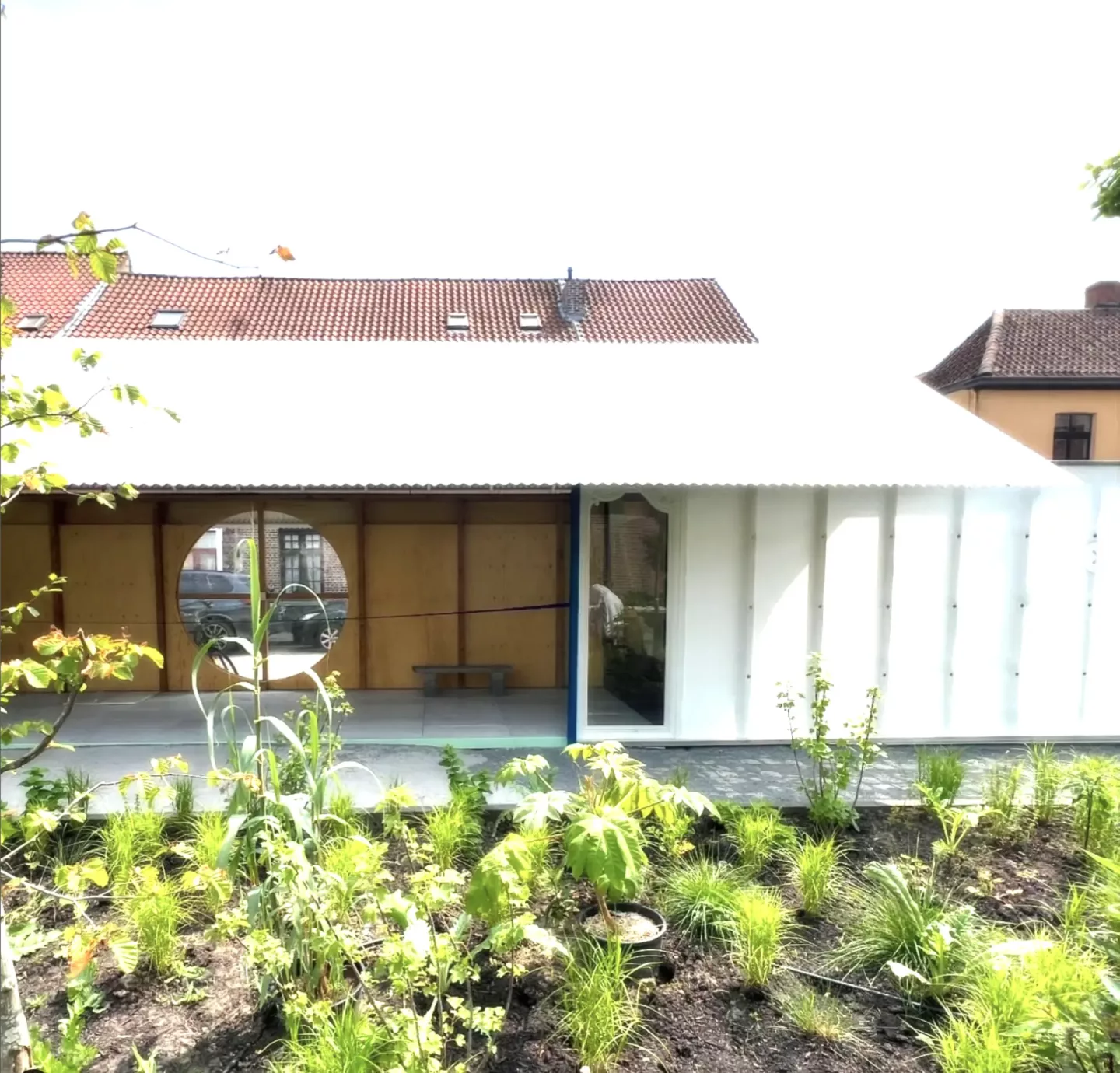

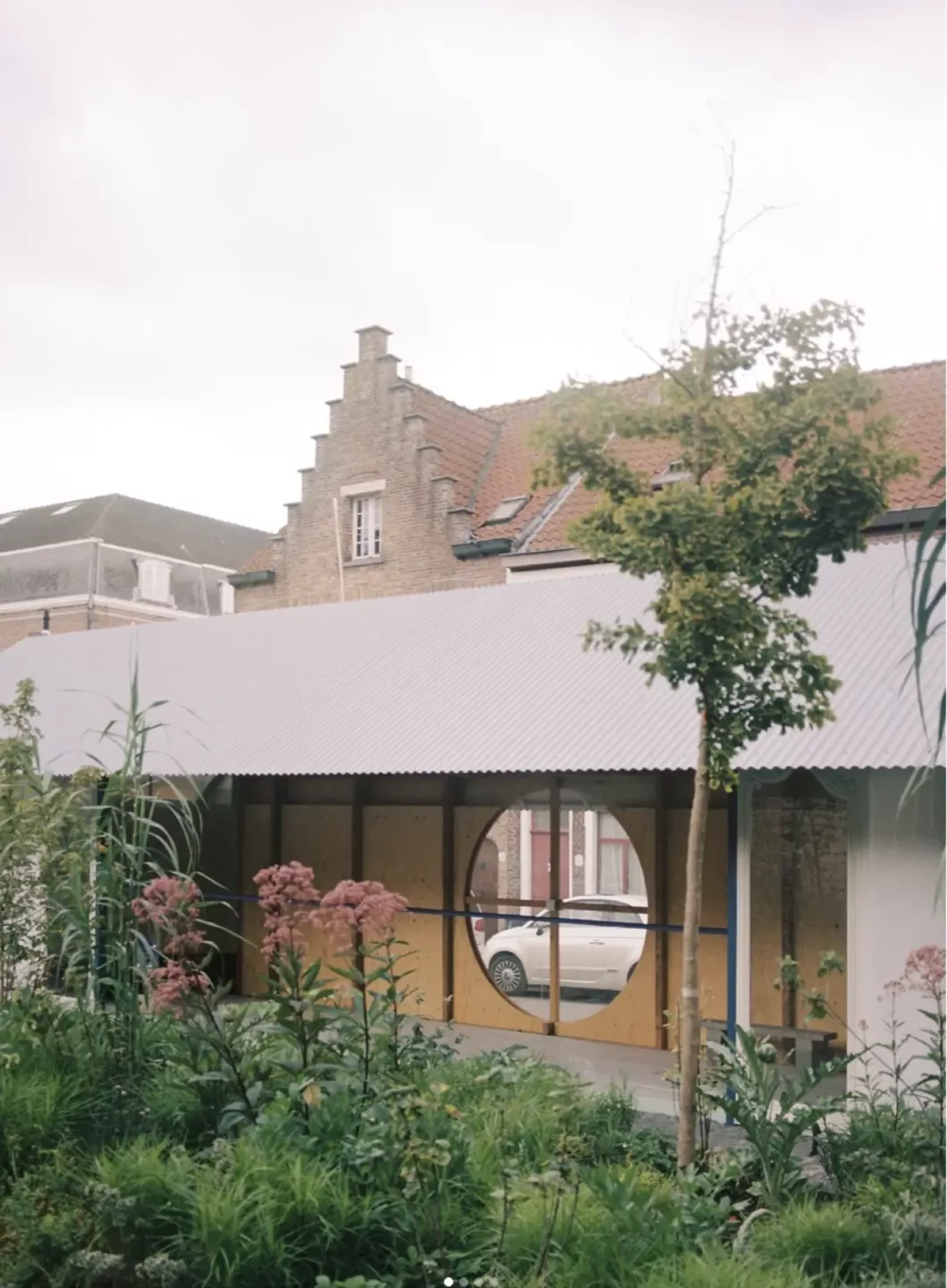
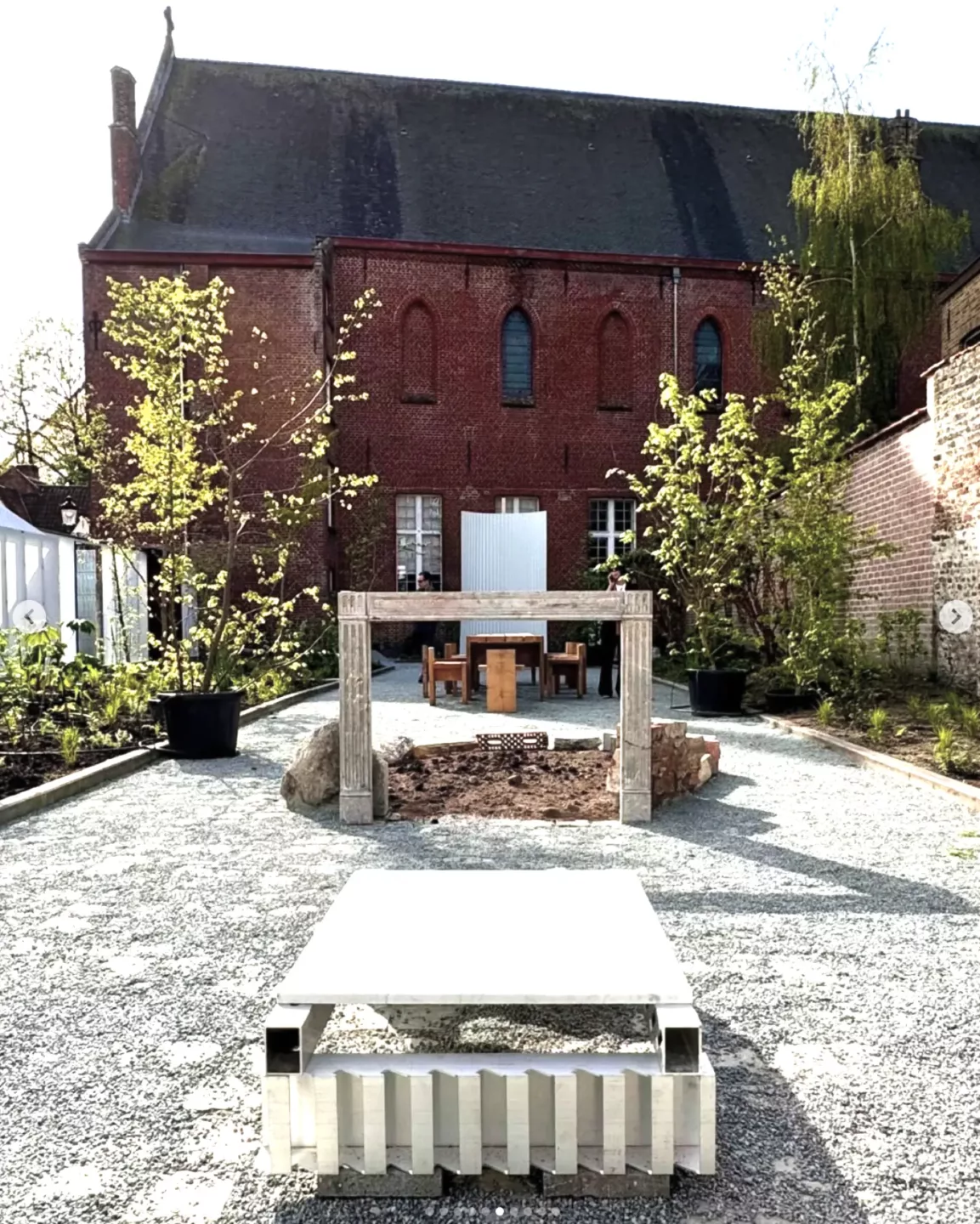
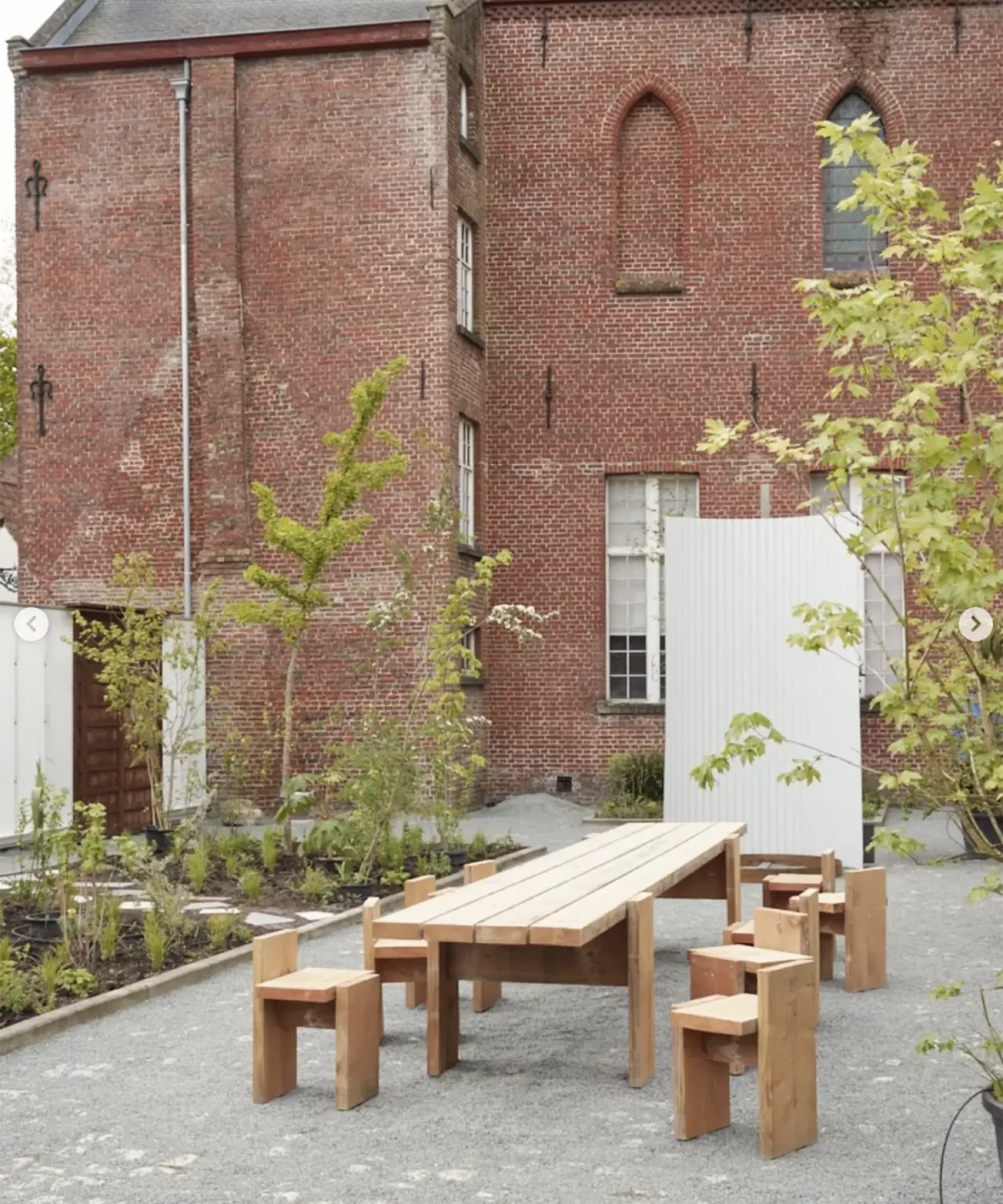
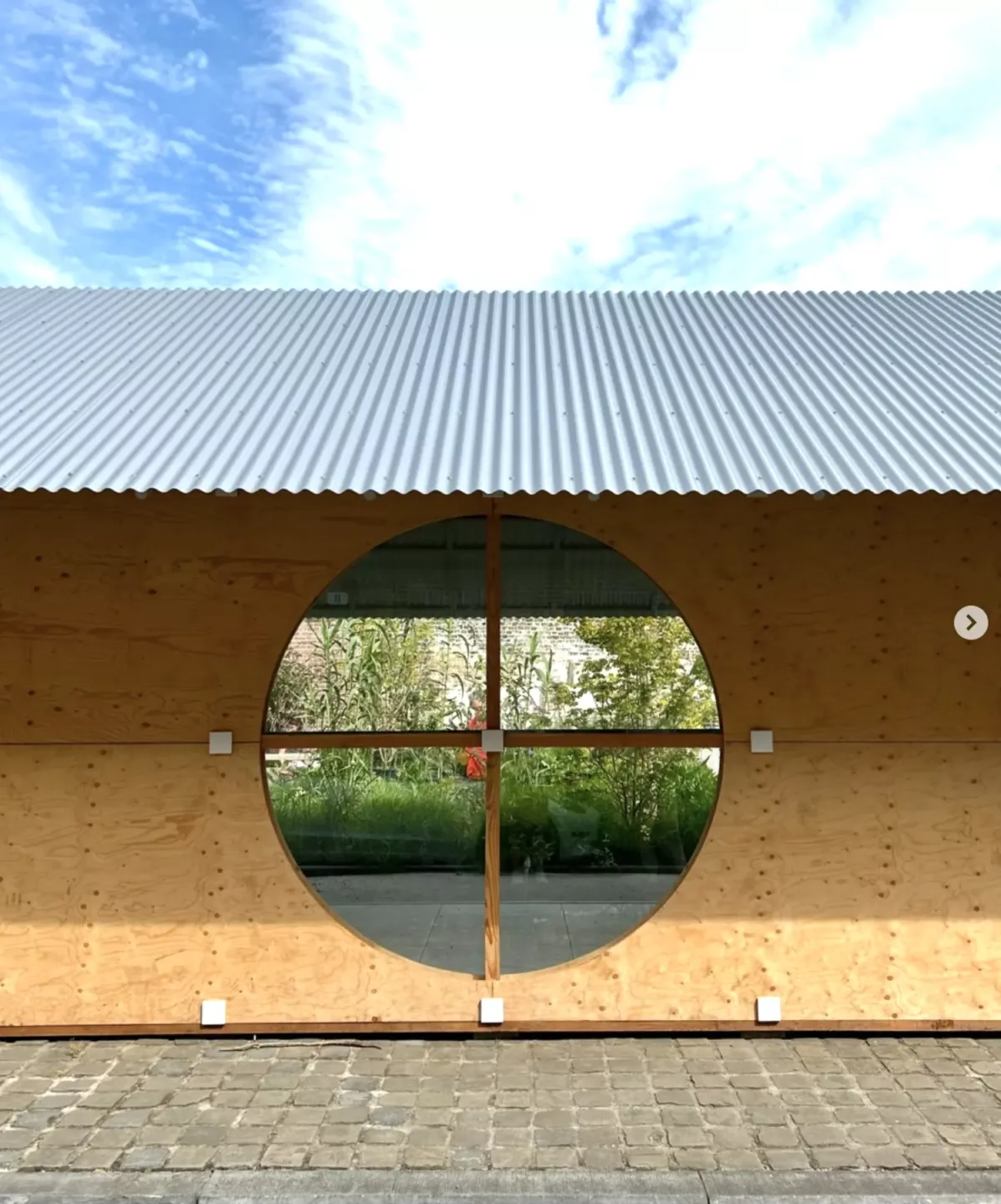
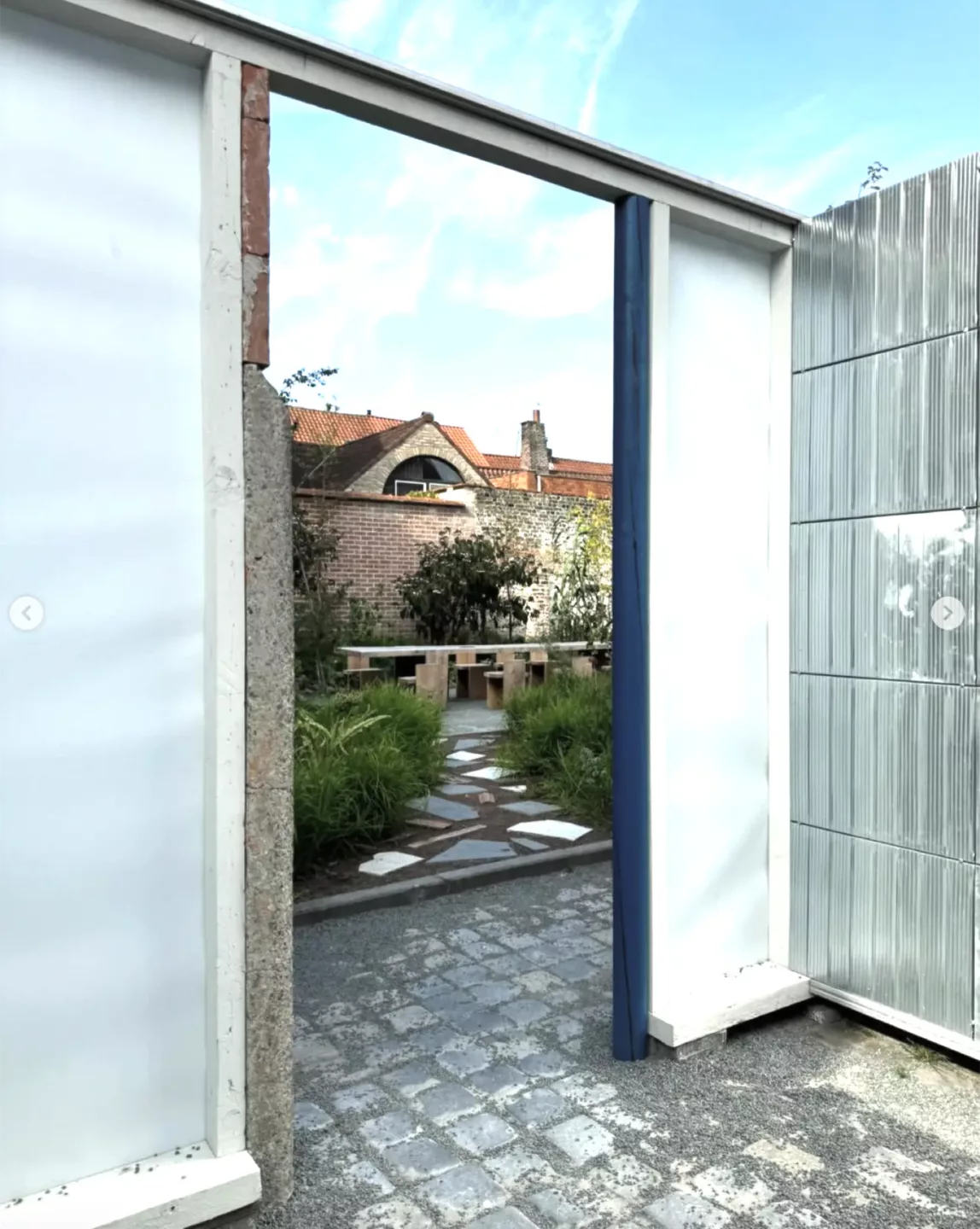
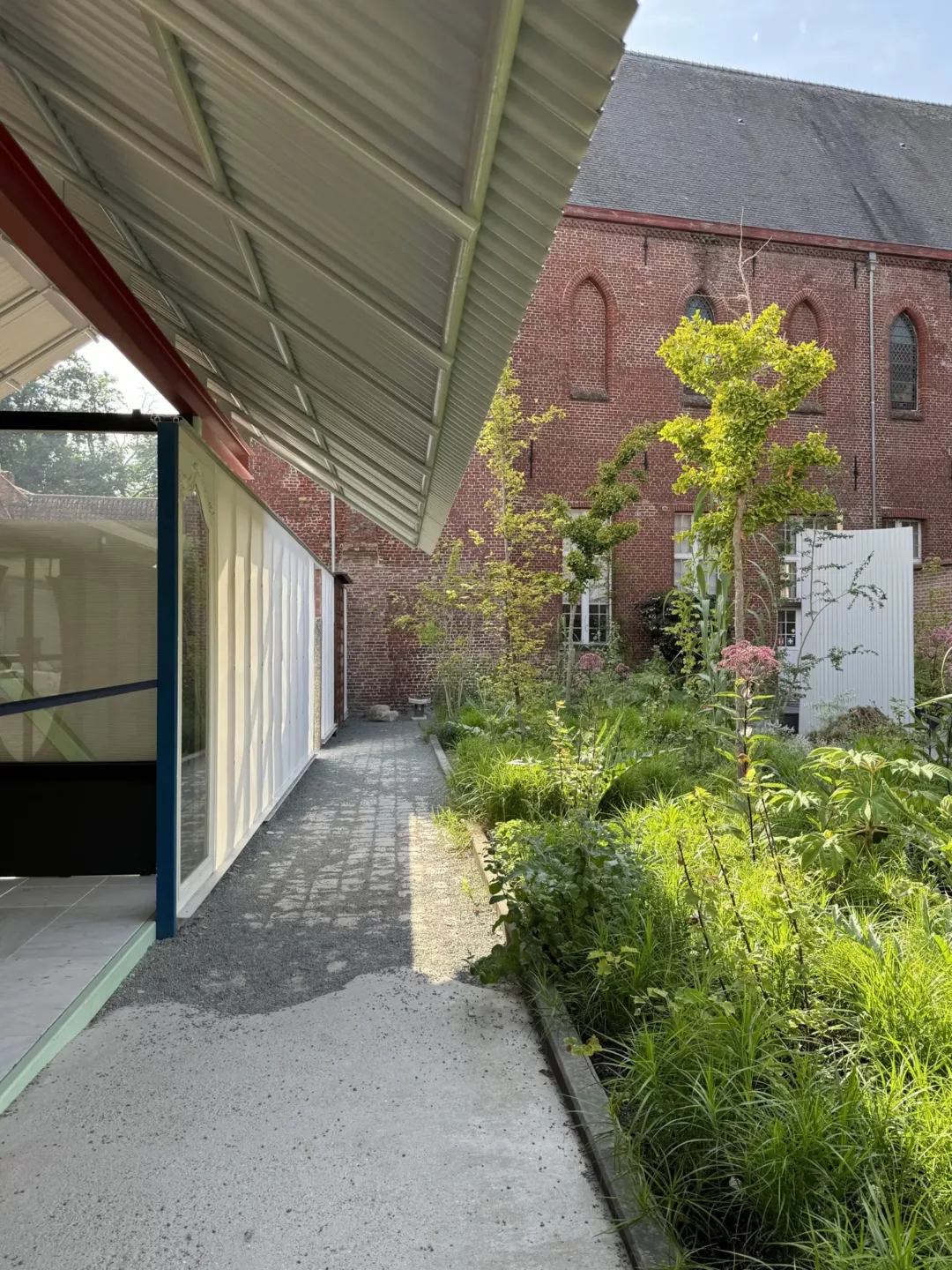
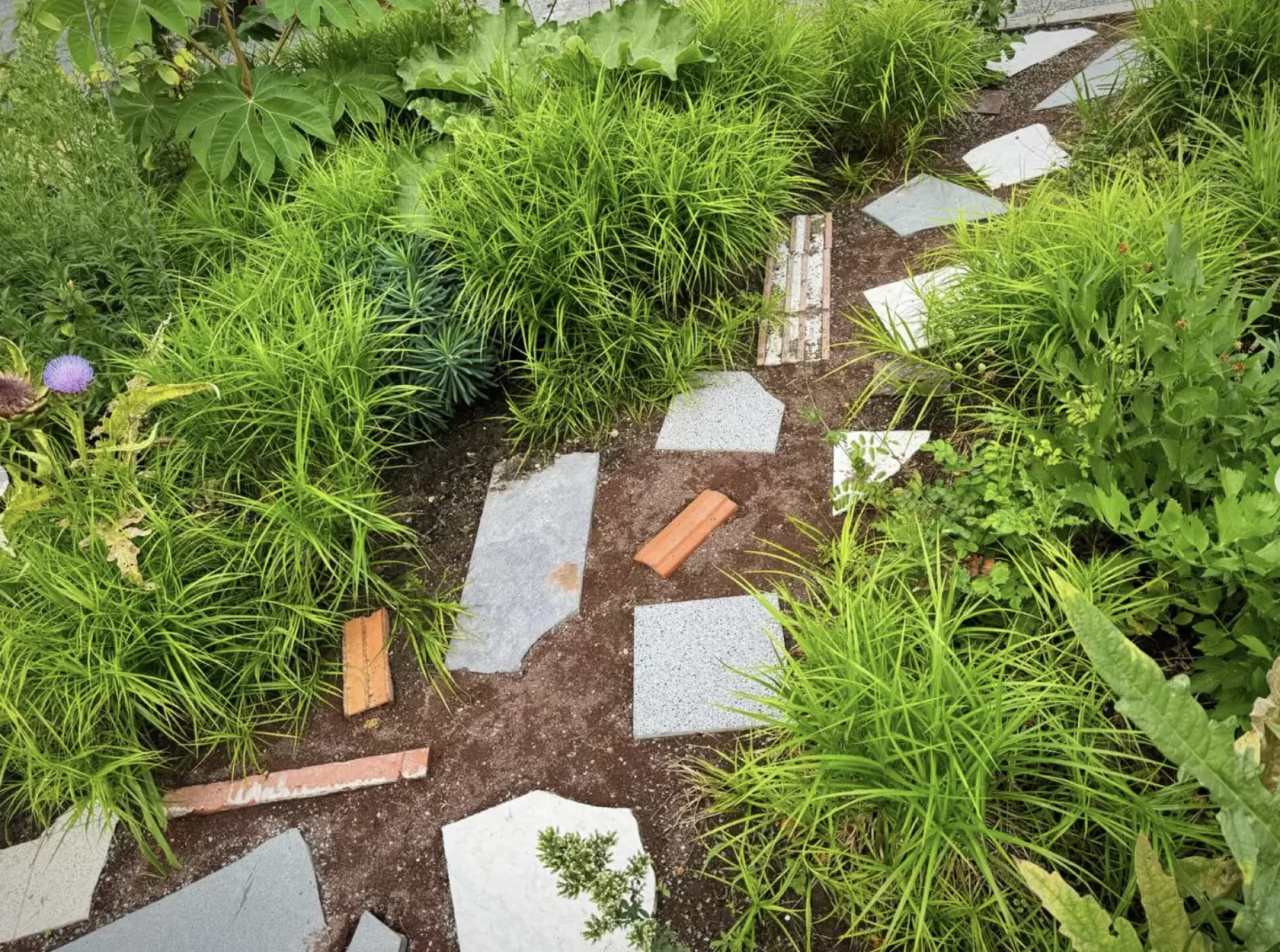
Community Garden Norell Rodhe
In collaboration with the architecture team of Norell-Rodhe, Plant en Houtgoed designed and built a temporary community garden for their pavilion at the Bruges Triennial 2024. Conceived as an embracing, green oasis, the garden gently encloses the pavilion in a living landscape—a space of calm, encounter, and interaction for both local residents and visitors to the Triennial.
The design blends in-ground planting with a modular setup of potted plants, allowing for a lush and mature appearance within a temporary framework. The planting palette is anchored in resilient native species, enriched with edible, fragrant, and tactile plants. The result is an urban ecosystem that engages the senses and invites exploration and slowing down.
Seasonality plays a key role: the garden evolves week by week, offering a shifting experience with each visit. Both the pavilion and garden follow circular principles, with a focus on temporariness, reuse, and material efficiency.
This project demonstrates how even short-term interventions can temporarily transform urban space into inclusive, biodiverse places of encounter—resonating with both ecological and social dynamics.
In samenwerking met het architectenteam van Norell-Rodhe ontwierp en realiseerde Plant en Houtgoed een tijdelijke gemeenschapstuin voor hun paviljoen op de Triënnale van Brugge 2024. De tuin werd opgevat als een omhullende, groene oase die het paviljoen als een zacht levend landschap omsluit – een plek van rust, ontmoeting en interactie, zowel voor buurtbewoners als voor de bezoekers van de Triënnale.
Het ontwerp combineert beplanting in volle grond met een modulaire opstelling van potplanten, wat toelaat snel een volwassen, rijk geschakeerd beeld te creëren binnen de tijdelijke context. De vegetatie is opgebouwd rond een robuuste basis van inheemse soorten, die ecologische veerkracht garanderen en aangevuld werden met tal van eetbare, geurige en tactiele soorten. Zo ontstaat een stedelijk ecosysteem dat alle zintuigen aanspreekt en uitnodigt tot ontdekking en vertraging.
Seizoenaliteit vormt een cruciale ontwerpcomponent: de tuin verandert doorheen de weken, waardoor elke passage een andere beleving biedt. Zowel het paviljoen als de tuin zijn ontworpen volgens circulaire principes, met maximale inzet op tijdelijkheid, herbruikbaarheid en materiaalefficiëntie.
Deze tijdelijke tuin toont aan hoe ook kortstondige ingrepen stedelijke ruimtes tijdelijk kunnen omvormen tot inclusieve en biodiverse ontmoetingsplekken, die resoneren met ecologische én sociale dynamieken.